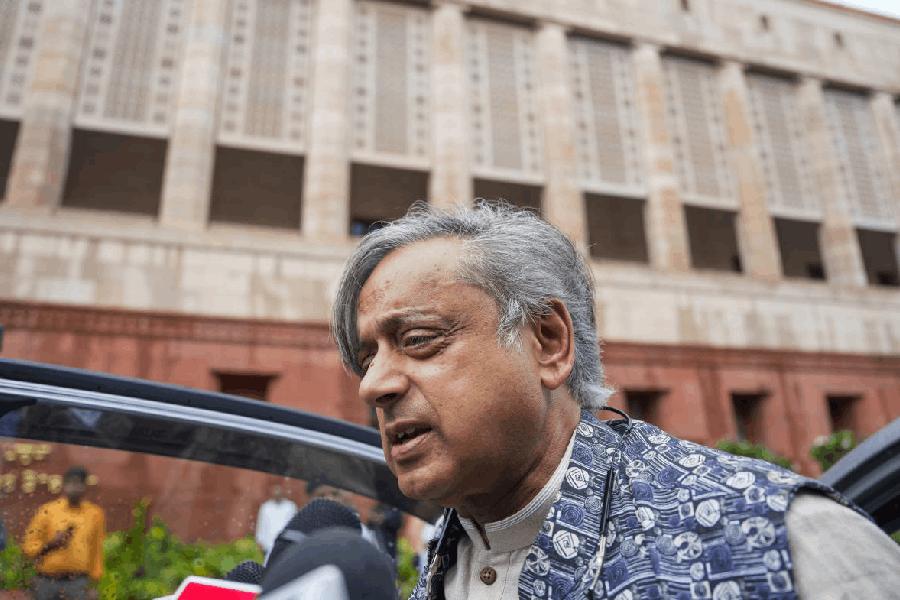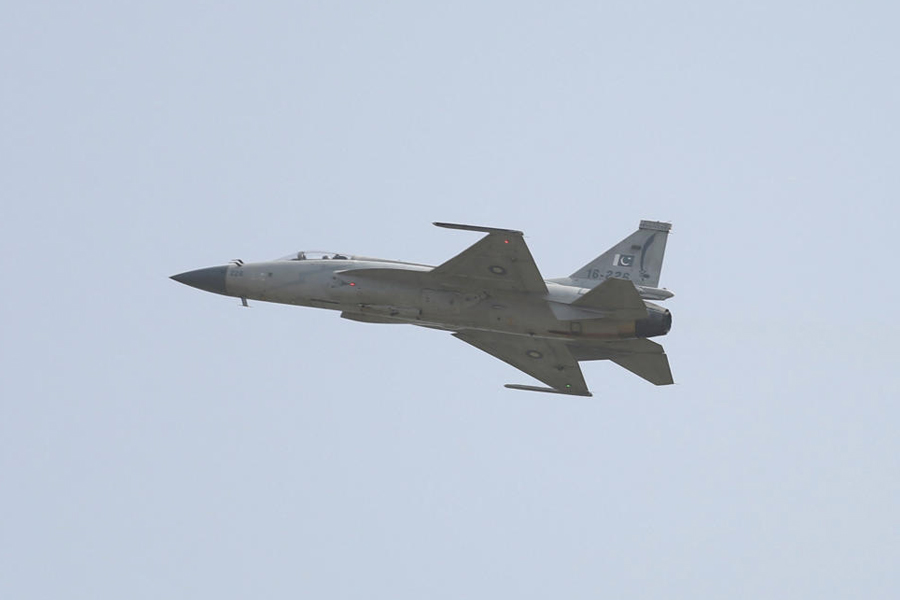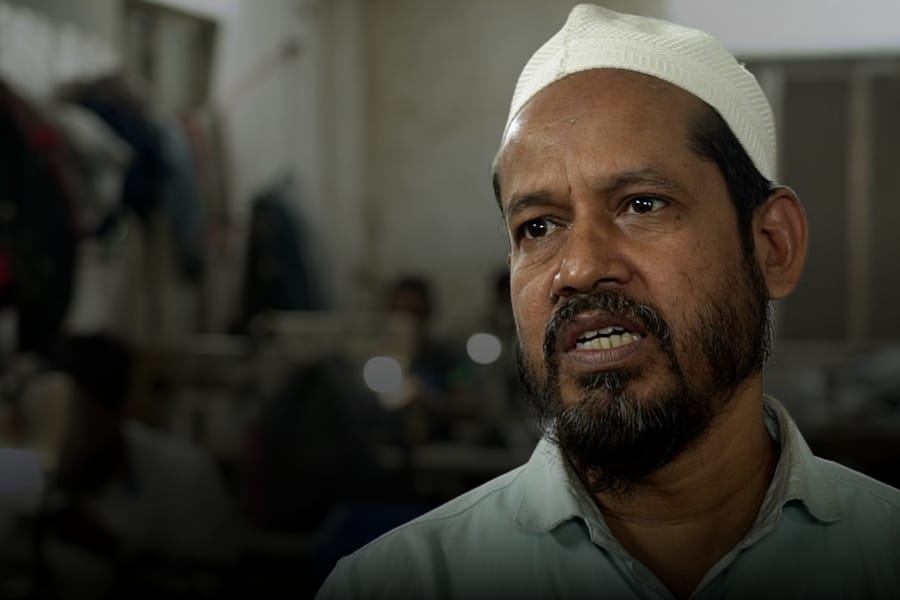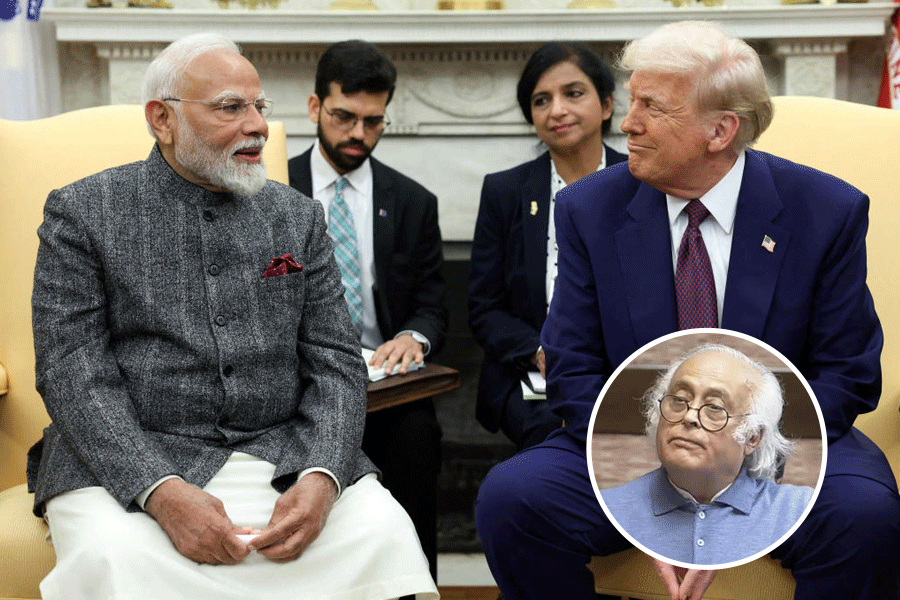.jpg)
Every country or city has its own annual excuse for going a bit crazy. The Europeans do it over the very long Christmas-New Year season and the Chinese go overboard during their New Year. Indians, however, have a wider choice and where Bengal and Calcutta are concerned, the Durga Puja has it all. Bengalis of both the home-grown or the adopted variety take their Pujas very seriously, and their planning for the next year starts barely weeks after the current year’s heart-wrenching, soul-searing immersion of the images takes place. Where this energy comes from remains a mystery, because it’s hardly evident in office or enterprise.
It manifests itself even two months or so before the actual dates, when roads are blocked or choked with huge bamboo and tarpaulin constructions. On the plus side, one can actually observe the stages through which these humble materials are transformed into wonders, with just cloth, plywood and decorative items.
‘Theme pandals’ are the biggest draws and there’s hardly any edifice or heritage site that hasn’t been displayed: from temples and churches of every land to the Eiffel Tower. Mountains are literally ‘assembled’ and even caves like Ajanta or Amarnath created with superb craftsmanship. The Titanic was in Calcutta when the film broke international records, as were the dinosaurs when Spielberg’s Jurassic Park rocked the movie halls.
.jpg)
Entire quaint villages were set up in the middle of the bustling, overcrowded metropolis. As for materials, nothing has been left untried: from glass bottles and earthen cups to glazed tiles. These are but just a few of the “world’s best specimens of installation art” as hundreds of pandals that vie with each other through such wonderful displays. Durga images have been made from betel nuts or shaving blades and even with match sticks and broken glass bangles. Imagination and experimentation runs riot at this time of the year and one cannot say whether this comes from fish or Bengal’s unusually hot autumn.
This astounding imagination and variety appear also in the style in which Durga and family appear. Her dress ranges from the traditional to the modern and to the ultra-modern and every possible manner and posture in which a demon can be slain. But doesn’t it offend religion? Well, Durga Puja is more a social celebration and worship is not mandatory and most Bengalis were hardly that conservative so as not to dabble in modern art, often bordering on the outrageous. Oh, I forgot to say: a small standard idol is often kept on the side for the priests to worship, as many of them are distinctly uncomfortable with unorthodox material and they can focus their prayers on a goddess who looks a bit normal.
When one talks of crowd the only words possible are: “Oh my God!” The world’s hugest gatherings like over-hyped sports events and open-air Western music concerts are outstripped, with millions out on Calcutta’s streets. This total number is hardly matched by any event in India, except the Kumbh Melas. It’s really creditable that stampedes are almost unheard of. The Calcutta that bursts into flames for the slightest reason never loses its cool under such stress, that’s the magic of the festival. Fairs are set up in numerous parks and public spaces, complete with merry-go-rounds, giant wheels and fun.
Food stalls are everywhere and from all states and countries, and many families simply don’t cook at home. Music’s in the air, again of all types, though Bengali ‘hits’ and rock bands were the most popular. Then came the court orders on sound pollution, so the songs are a bit more restrained. The lights, however, scream aloud and it began as “fairytale settings” all over the city in the 1960s or so with thousands or more electric bulbs strewn like lit up garlands. As time passed, came the tiny coloured lamps that turned the pandals and nearby buildings into rhapsodies of twinkling lights.
For the kids and the grown-ups alike, these were ethereal settings, but organiser clubs were not satisfied and they moved on to ‘theme lighting’ to match their ‘theme pandals’. By the 1990s, semi-computerised tiny ‘Chandannagar’ moving lights had invaded Calcutta and organisers could show ‘live scenes’ like Ram chasing the golden deer, or a football match in action. The technicians, literate or otherwise, can take on the world’s most skilled wizards.
But let’s push our way forward to the main mandap. The external decoration of the pandals enthrall, but their interiors are often far better. Skilled artistes dexterously fold simple coloured cloth or cut masonite boards to create intricately decorated pillars, ceilings and attractive walls. One interior may look like the Madurai Meenakshi Temple’s thousand pillars, while another replicates the Sistine Chapel’s frescos. The play of lights is so subtle that it’s difficult to believe that these artisans live in humble surroundings.
The Puja season is heralded with agamoni songs and the beat of drummers who move from the village to city and sway to the rhythms of their dhaks adorned with large colourful plumes. Puja Special magazines are a must even now and god only knows how people find the time to read a dozen or more stories, double that number of poems and many other features that appear in small print through some 300 pages of each magazine. There’s a unique ritual of dancing before the goddess, with burning and smoking incense holders, called dhunuchi naach. Boys and girls often dance with two flaming earthen bowls in their hands, and a third between their teeth, as they gyrate and twist samba-style.
.jpg)
Incidentally, two developments have marked out Calcutta’s Durga Pujas in recent decades. Pujas organised by the youth of the ubiquitous padas (neighbourhood) have steadily been outnumbered by high-rise and housing society pujas. This is, perhaps, the only occasion where anonymous neighbours meet each other.
The other development is that the pada pandals have been commercialised and advertisements are everywhere, except on the face of Maa Durga. So, what began as the transformation from the puja of the zamindars into an assertion by the common citizens through their barowari Pujas seem to have taken another turn in the 21st century.
But what’s unchanged is the spirit of Visarjan where the sindoor khela by married women, smearing each other with bright red vermilion has actually increased — rather surprising in an age when women celebrate their freedom. The immersion processions still offer an occasion for the young to ape the latest Hindi films dance sequences and the massive crowds at the ghats of the Hooghly bear testimony to the undying spirit of Calcutta and its people.
Jawhar Sircar is the CEO
of Prasar Bharati

.jpg)









